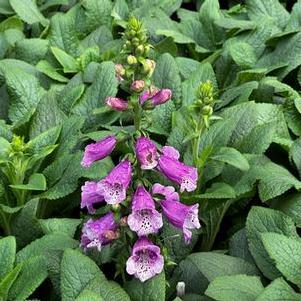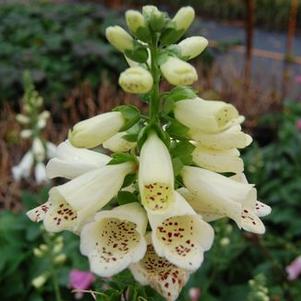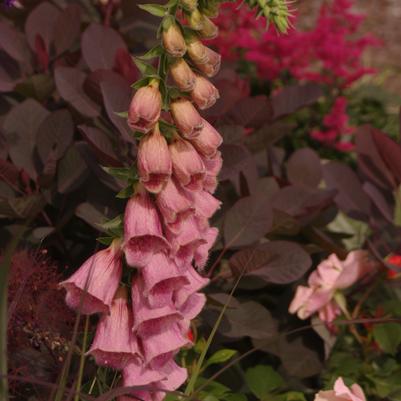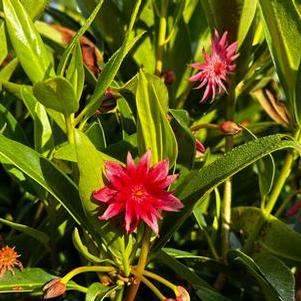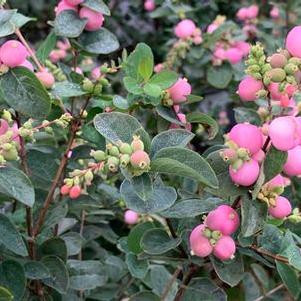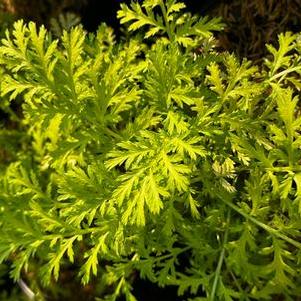Double, Double, Soil and Rubble…
Although the witches in MacBeth were known to use yew and poison hemlock in their wicked brew, they could have considered several other plants with high toxicity characteristics that are perfect for spiritually infiltrating the souls of Scottish monarchs… uhh… that are perfect for jazzing up the landscape with their beautiful (but somewhat deadly) ornamental features. While we don’t necessarily recommend nibbling on random leaves and berries that visually appeal to you without knowing exactly what they are, here are three plants that you most definitely do NOT want to experiment with culinarily that still make for lovely specimens in the garden.
Before we tread into this wonderous world of poisonous plants, let’s clarify the difference between a poisonous substance versus a toxin. While these terms may be used synonymously, a toxin is categorically a poison that is naturally produced by a living being (i.e., plants) – so what is poison, then? Well, poison can be both manufactured or naturally produced – however, technically speaking, a poison is considered more deadly than a toxin. While a toxin may produce negative effects when ingested or applied externally, a poison is basically guaranteed to ruin your day. Regardless, we don’t recommend ingesting or slathering anything on that calls itself toxic or poisonous in any capacity. With that disclaimer out of the way, let’s get to the good stuff!
Naturally, anything toxic or poisonous is usually beautiful. Symphoricarpos x Proud Berry® is no exception. With its rather inconspicuous, delicate pink blooms that transform to somewhat synthetic-looking white to light pink fruits, this North American native shrub is a curious addition to the plant enthusiast’s collection. Commonly called Coralberry, it is the coral-pink colored fruits that give this plant its name as well as its toxicity. Proud Berry® coralberry (‘Sofie’ PP21226) is an excellent low-growing deciduous shrub that has been prized for its showy set of bird-friendly fruits that appear in autumn following its late summer bloom period, when it is noticeably attractive to various bee, hoverfly, and butterfly species. While the cute, enticing little fruits may beckon for you to take a gamble and pop one into your mouth, we implore you: don’t. While its relative (and likely one of its parent plants), Symphoricarpos albus, or snowberry, has been linked to hospitalizations in children who ingested some of the waxy fruits and experienced nausea, vomiting, delirium, and other illness-inducing effects of the toxic glycosides found within this genus, the fruits of Symphoricarpos orbiculatus (most likely the other parent plant of this cultivar) have a slightly lower toxicity threshold and don’t seem to result in quite as detrimental an outcome if ingested. Interestingly enough, recent studies of the iridoid glycosides within Symphoricarpos albus have found that specific compounds loganin, secologanin and loganetin may be helpful in alleviating symptoms of Alzheimer’s disease. While further clinical trials need to be undergone in order to better understand these biological mechanisms, the future of iridoid glycosides as preventative and curative Alzheimer’s treatments is intriguing if not hopeful (Eskandarzadeh, et al 2021).
While the glycosides of Symphoricarpos sp. may prove to be somewhat promising, those that exist within the Digitalis sp. are downright deadly. All parts of foxglove plants are considered highly toxic, producing malignant cardiovascular effects that have proven fatal in various instances. Interestingly, these same glycosides have been isolated from the genus for the purpose of strengthening heart muscle contractions as well as helping to bring homeostasis back to those suffering from congenital heart diseases such as atherosclerosis and hypertension by regulating blood circulation. Proper dosage is critical in these instances, as the wrong dosage can be lethal. Despite their deadliness, Digitalis have created a niche for themselves amongst gardeners due to their tall, upright stature and their large, showy, bell-shaped blooms. We offer several different foxglove varieties, from the creamy white flowering Digitalis purpurea ‘Dalmatian White Improved’, to ‘Dalmatian Peach’ foxglove with its light peach-apricot blooms, ‘Foxy’ with gradient of white to cream to pink, ‘Dalmatian Purple Improved’ with its deep purple petals, and Digitalis x mertonensis with its delicate strawberry-pink inflorescences. Click each of the links below to see each of these wonderful varieties on our website!
While we’re still in poisonous perennial land, we’re excited to introduce a new selection to the Pleasant Run line up: Tanacetum vulgare ‘Isla Gold’, with its yellow-to-chartreuse foliage and golden yellow button-like flowers is the contrasty, front-of-the-sunny-border plant you’ve been looking for. This golden leaf tansy provides the feathery, delicate foliage and clusters of golden buttons that the species is revered for, although this particular variety’s unique, bright yellow foliage stands out in the garden and seems to also enhance the color of whatever plants are fortunate enough to bask nearby in its glory. ‘Isla Gold’ tansy is the perfect compliment to late summer and early fall purples, pinks and reds in the cottage or border garden. Tanacetum vulgare has a bit of a complicated history when it comes to its medicinal qualities. Its aromatic foliage make it a bane for unwanted insects, both in the landscape as well as in vermifuge form when taken internally. Minimal dosages of tansy tea is also said to have beneficial effects on the kidneys, as well as having mild nervine properties that have helped to calm hysterical episodes. However, the concentrated essential oils, particularly the volatile oil called thujone, have been known to be fatal; there have been recorded incidents of people dying after ingesting only 10 drops of the essential oils. It should be said that teas and powdered forms of the plant are also suspect in terms of toxicity – best to just not even try it at all (unless, of course, under the care of an experienced herbal practitioner).
Finally, to round out our tiny pharmacopeia of deadly plants, we leave you with Illicum x ‘NCIH1’, better known as ‘Scorpio’. This compact, hybrid version of our North American native anise tree is sure to entice curious garden visitors with its spidery, bright red, lightly fragrant flowers. Deep green foliage remains evergreen throughout winter months, making this shrub a multi-seasonal champion year-round. The flowers appear sporadically throughout the summer and fall months after an initial and abundant spring bloom, giving way to star-shaped fruits that are reminiscent of common culinary ingredient, star anise. However, the culinarily useful fruits belong to Illicium verum, an anise species native to China that is noted also for its medicinal qualities. Meanwhile, our native Illicum species are quite the opposite: all parts of these plants are considered highly toxic. Even on a good day, over-consumption of Chinese star anise (again, Illicum verum!!!) can cause complications. That just goes to say, everything in moderation is key. In the famous words of Swiss alchemist and philosopher Paracelsus (c.1493-1541), “All things are poisons, for there is nothing without poisonous qualities. It is only the dose which makes a thing poison.”
AMNH. “Poison in Myth and Legend.” American Museum of Natural History. Accessed October 14, 2023. https://www.amnh.org/exhibitions/the-power-of-poison/poison-in-myth-and-legend.
Editorial Pharmacists. “Digitalis Uses, Benefits & Dosage - Drugs.Com Herbal Database.” Drugs.com, November 19, 2021. https://www.drugs.com/npp/digitalis.html.
Editors of Encyclopaedia Britannica, ed. “Digitalis.” Encyclopædia Britannica, August 30, 2023. https://www.britannica.com/science/digitalis.
Eskandarzadeh, Marzieh, Parastou Kordestani-Moghadam, Saeed Pourmand, Javad Khalili Fard, Bijan Almassian, and Sajjad Gharaghani. “Inhibition of Gsk_3β by Iridoid Glycosides of Snowberry (Symphoricarpos Albus) Effective in the Treatment of Alzheimer’s Disease Using Computational Drug Design Methods.” Frontiers in Chemistry 9 (2021). https://doi.org/10.3389/fchem.2021.709932.
Grieves, M. “Tansy.” A Modern Herbal | Tansy, 1995. https://www.botanical.com/botanical/mgmh/t/tansy-05.html.
Lewis, Walter H. “Snowberry (Symphoricarpos) Poisoning in Children.” JAMA: The Journal of the American Medical Association 242, no. 24 (November 14, 1979): 2663. https://doi.org/10.1001/jama.1979.03300240009006.
NC State Extension. “Digitalis Purpurea.” Digitalis purpurea (Common Foxglove, Foxglove) | North Carolina Extension Gardener Plant Toolbox. Accessed October 14, 2023. https://plants.ces.ncsu.edu/plants/digitalis-purpurea/.
NC State Extension. “Symphoricarpos Orbiculatus.” Symphoricarpos orbiculatus (Buckbrush, Coralberry, Indian Currant, Snowberry, Waxberry) | North Carolina Extension Gardener Plant Toolbox. Accessed October 14, 2023. https://plants.ces.ncsu.edu/plants/symphoricarpos-orbiculatus/.
Perennial Resource. “Tanacetum Vulgare ‘Isla Gold’: Perennial Resource.” Tanacetum vulgare “Isla Gold” | Perennial Resource. Accessed October 14, 2023. http://www.perennialresource.com/variety.php?ID=TANIG.
Proven Winners. “Proud Berry® - Coralberry - Symphoricarpos SP..” Proven Winners. Accessed October 14, 2023. https://www.provenwinners.com/plants/symphoricarpos/proud-berry-coralberry-symphoricarpos-sp.
Therapeutic Research Faculty. “Tansy: Overview, Uses, Side Effects, Precautions, Interactions, Dosing and Reviews.” WebMD. Accessed October 14, 2023. https://www.webmd.com/vitamins/ai/ingredientmono-686/tansy.

Illicium x 'Scorpio'



